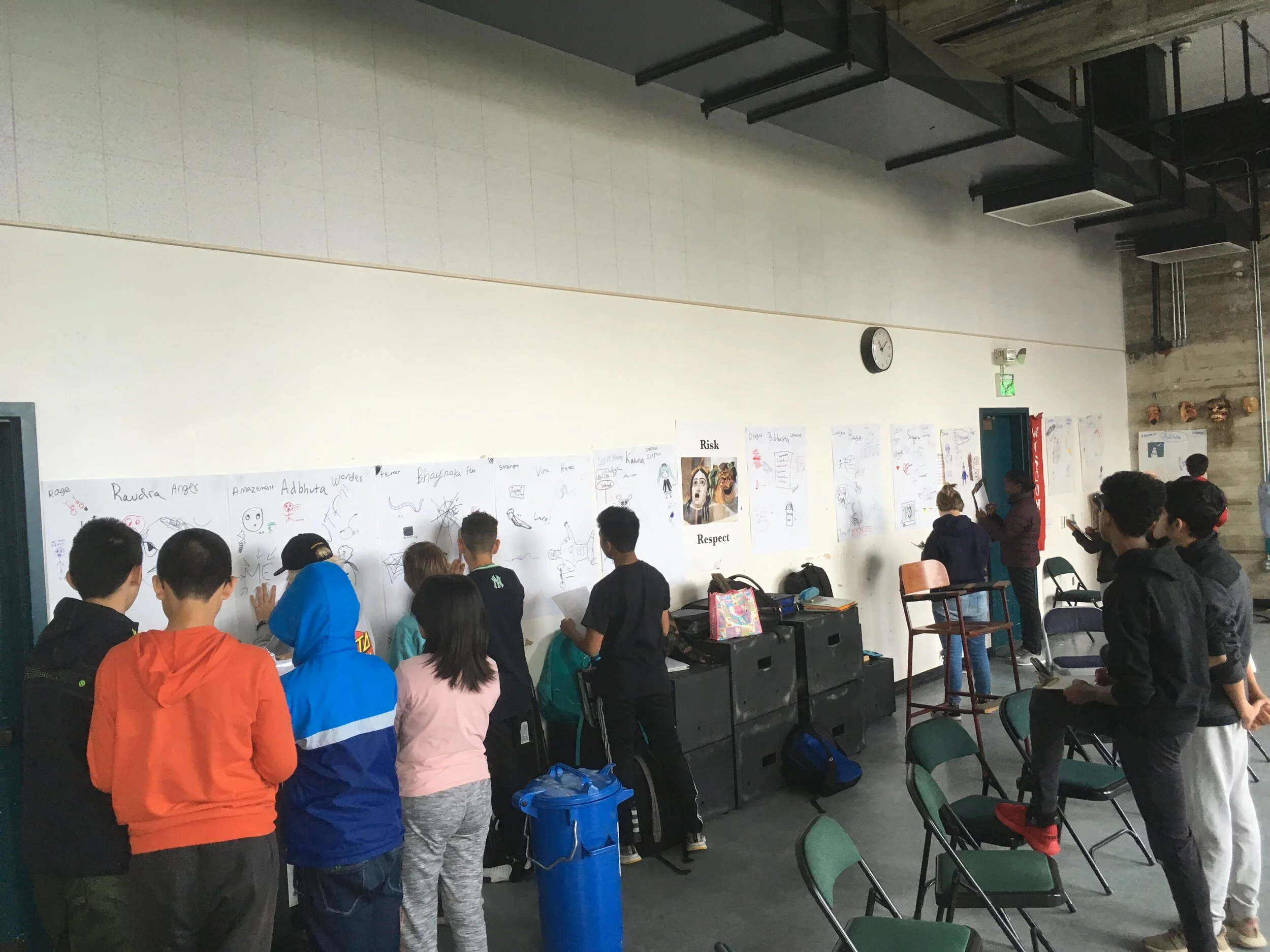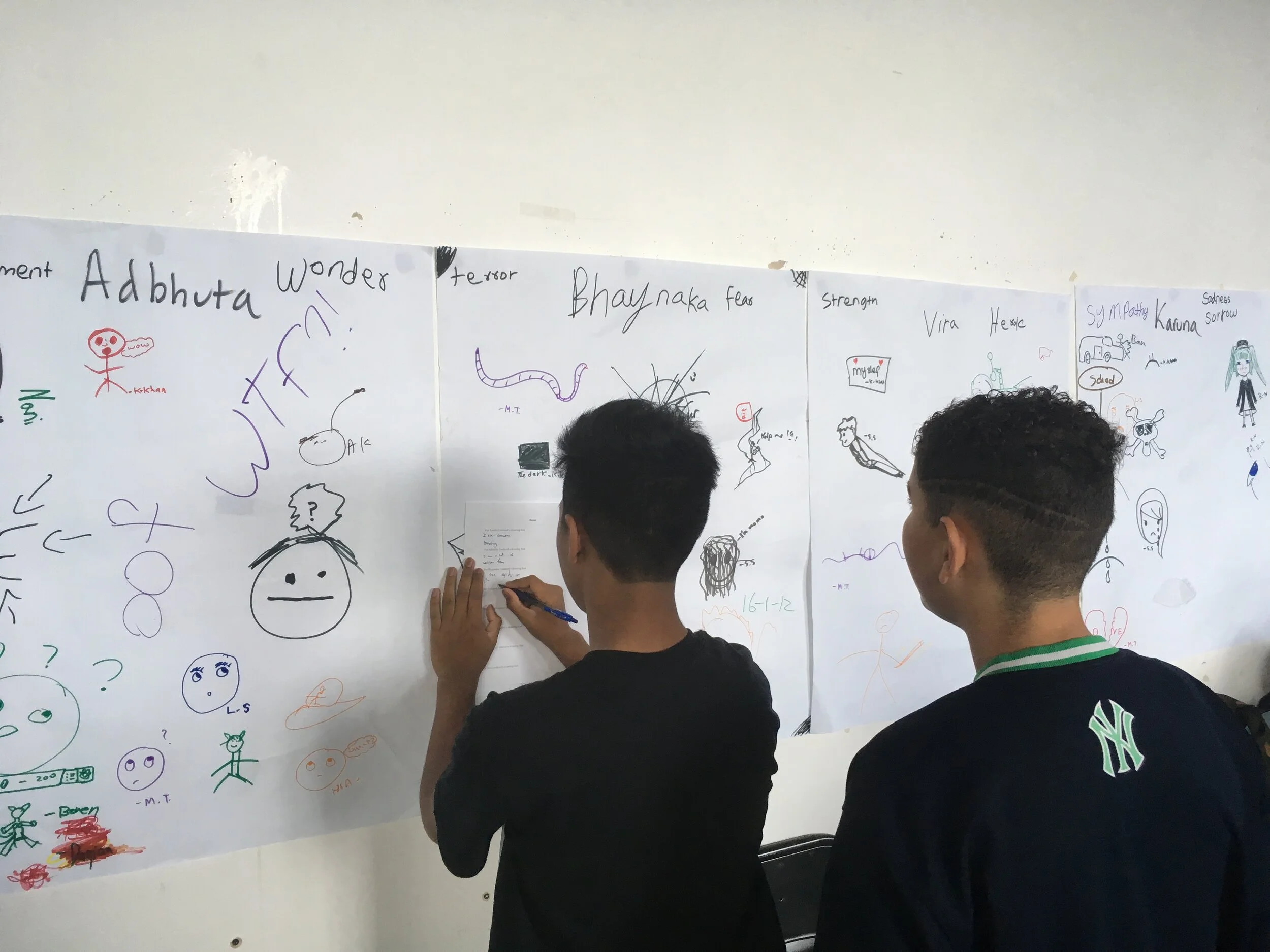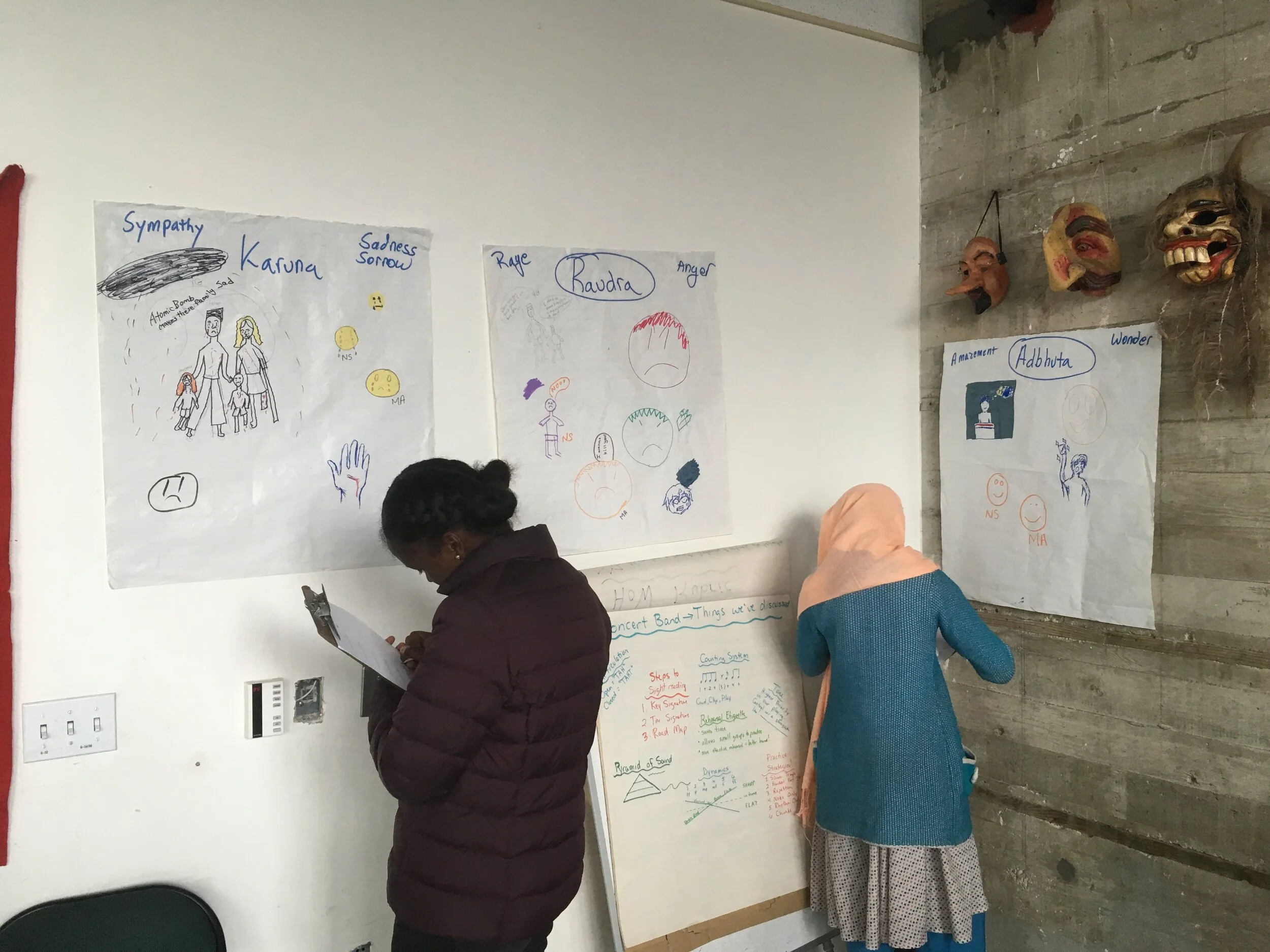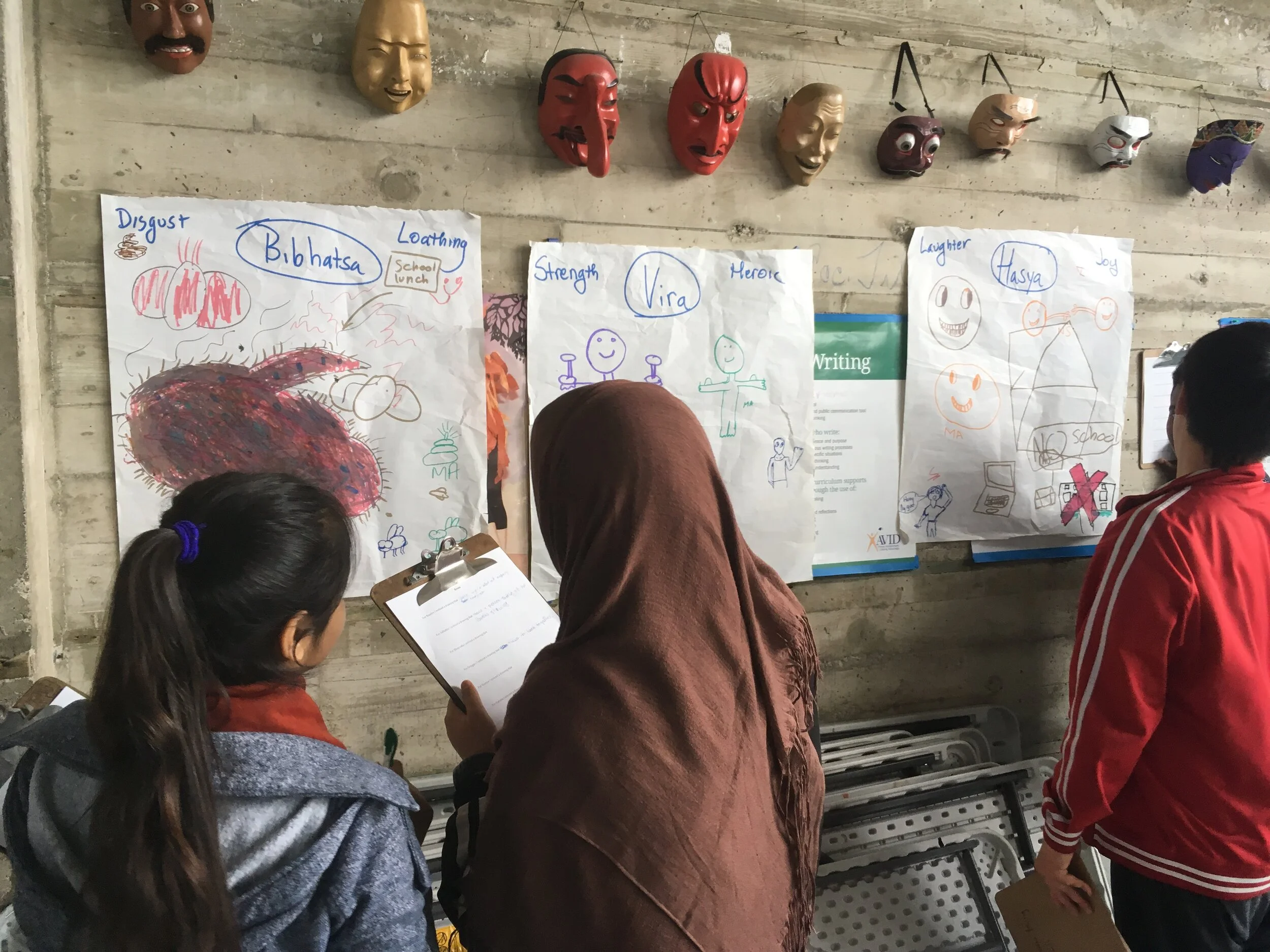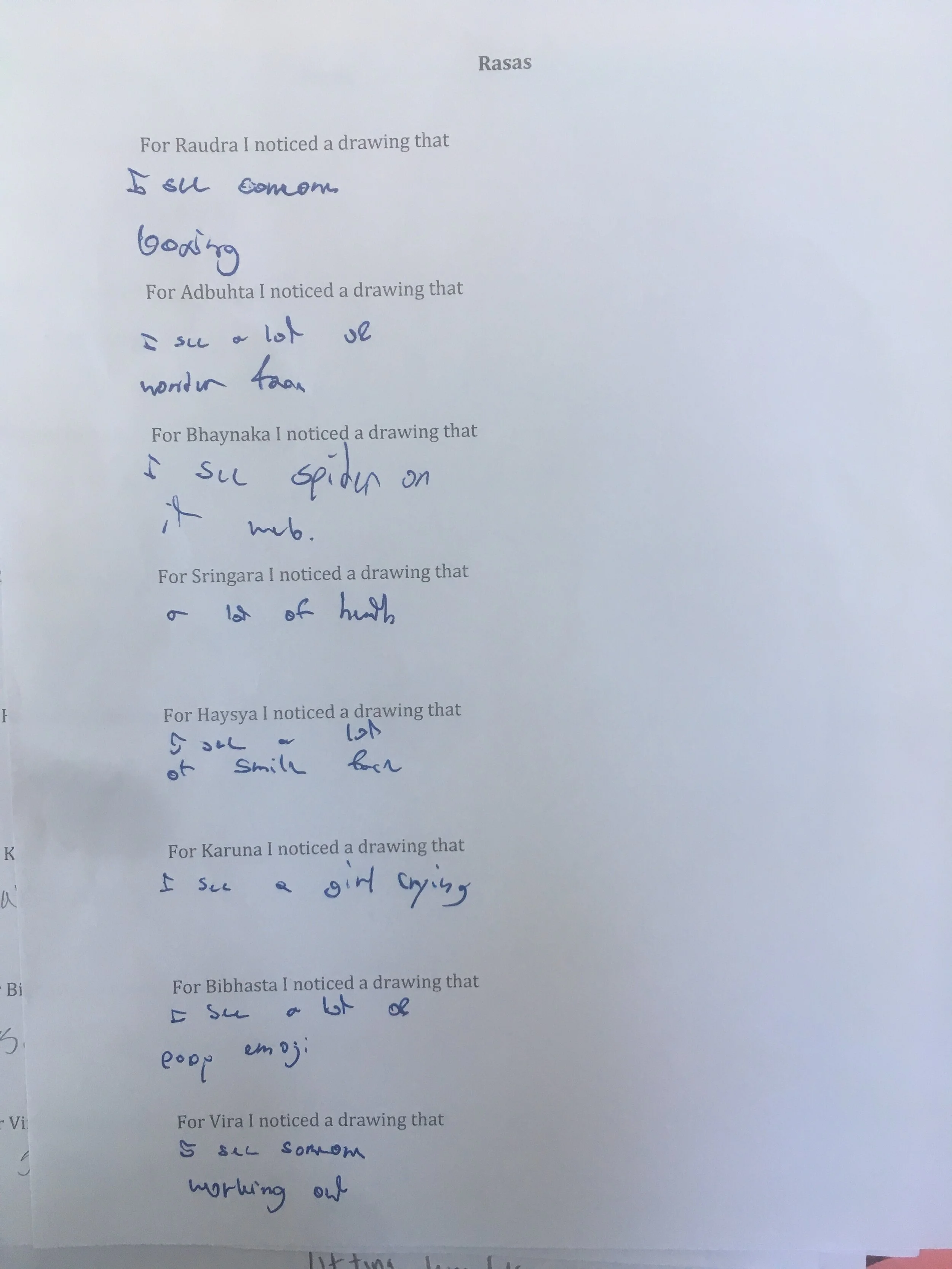Students during a Gallery Walk of Rasa drawings
Student’s work mingle with clipboards and worksheets, sharing observations informally
Student’s write what they notice for each rasa on accompanying worksheet
Some choose to work alone, others with classmates. Very informal.
We spent about 15 minutes on this process
Some students watch others and learn from them
Sample of worksheet student’s used in the gallery walk
Rasa Boxes
Part II Gallery Walk
After the first session with rasa boxes is over, (click on the following link if you haven’t seen it yet: https://www.richardsilberg.com/rasa-boxes-introduction)and students have had an opportunity to explore each of the rasas and draw or write their associations, we do a gallery walk. It is usually the next day. I hang the poster papers up around the room and provide each student with a worksheet. In this case the worksheet was open-ended: students were to write down something they noticed. In other iterations I have made it more structured, again it depends on ones language goals. As a teacher you can create a worksheet that will allow your students to practice various language structures that you want them to review or practice. I tend toward an open-ended viewing where students are able to walk to any of the posters and linger or move quickly. However, I do encourage them to speak to each other as much as possible while they “wander”. There are so many rich language interactions and opportunities in this process. At the end we gather around a circle, or return to our desks, and have a structured conversation. I also have had students use various structured language practice strategies to enable them to formally share their observations with others. Again, it all depends on your language objectives.
They will use these sheets later in various structured language practice protocols that they are familiar with (i.e. lines of communication, give one get one, etc.)

